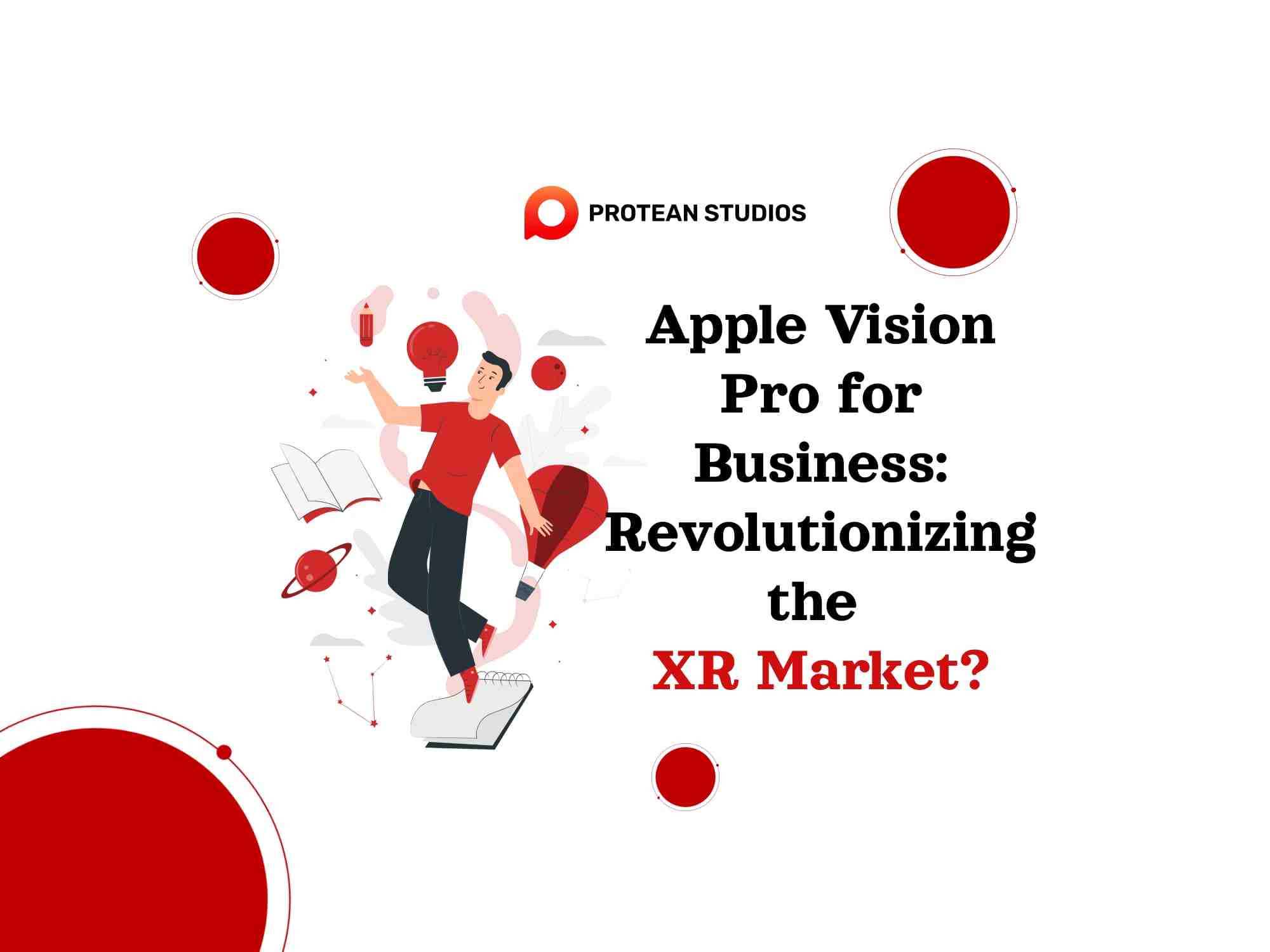The landscape of business meetings is undergoing a radical transformation, driven by the integration of cutting-edge technology. Augmented reality (AR) emerges as a powerful tool with the potential to redefine how teams collaborate, share information, and make decisions. By overlaying digital content onto the real world, AR creates immersive and interactive meeting experiences that enhance productivity, engagement, and innovation.
Learn more: AR/VR Trends And Predictions For The 2024-2030 Years
Corporate Applications of Augmented Reality
Business communication keeps changing. We've moved from face-to-face boardroom meetings to video calls across the globe. Now, augmented reality (AR) is the latest tool transforming how we meet and collaborate.
AR is making waves in the business world because it offers more than just a Zoom call. It lets teams from different locations view and work with the same 3D data as if they were in the same room.
Some applications of Augmented Reality
When someone puts on an AR headset, they can see and interact with 3D images right in their own space. They can draw on virtual whiteboards, handle 3D models, and edit documents together in real-time, just like in an in-person meeting.
All that’s needed is an AR headset. Depending on the model, users can interact with 3D objects using controllers, pointers, hand movements, or even eye gaze.
Advantages of Augmented Reality in Meetings
Augmented reality (AR) is transforming the way we interact and collaborate, and meetings are no exception. By overlaying digital information onto the real world, AR offers a host of benefits for businesses, including businesses, including:
Enhanced Visualizations: AR allows for complex data, 3D models, and prototypes to be presented in an immersive and interactive way, improving comprehension and decision-making.
Improved Collaboration: Remote and in-person participants can collaborate by sharing a common augmented reality space, fostering creativity and problem-solving.
Increased Engagement: AR's interactive nature captivates audiences, leading to better information retention and a more dynamic meeting experience.
Real-time Data Integration: AR can display real-time data and analytics within the meeting environment, enabling data-driven decisions and informed discussions.
Cost Reduction: By reducing the need for physical prototypes and travel, AR can lower meeting costs.
Remote Collaboration: AR bridges the gap between remote and in-person participants, creating a more inclusive and engaging meeting experience for everyone.
Hands-free Interaction: AR enables participants to interact with meeting content without the need for more devices, freeing up their hands for other tasks.
By leveraging these advantages, businesses can elevate their meetings to new heights of productivity, innovation, and collaboration.
Examples of Augmented Reality in Action for Meetings
AR for Global Teams: Bridging the Distance
AR technology is getting better and cheaper, making it easier to use in everyday life. One great way it's being used is to help teams work together even when they're far apart.
Imagine a team spread across New York, London, Tokyo, and Sydney. It's tough to find a time for everyone to meet, and it's even harder to work together in real-time. AR can solve this problem.
Connect the team through AR
Companies like Sphere, Zoho Lens, and Simply Video have created special tools for this. They let people see and interact with the same digital world, no matter where they are. It's like being in the same room, even if you're thousands of miles away.
Jake Ledner, from Sphere, says AR can save businesses a lot of time and money. For example, Micron used AR to fix problems in their factories, saving over 3,000 hours of downtime. AR also helps people learn new things faster by showing them what to do in a real-life setting.
In short, AR is making it easier for global teams to work together.
Learning made real with AR
Traditional training methods, like lectures and hands-on practice, can be boring and hard to follow. But with AR, learning becomes an exciting adventure. Imagine being able to practice new skills in a virtual world that feels just like the real thing. AR can make training more engaging and effective by putting learners right in the middle of the action.
Read more: Unlocking The Future: Mastering AR/VR Software Development
Show, Don't Tell with AR Product Demos
Trying to explain a new product can be tough, especially if it has lots of features. Flat images and boring presentations just don't cut it anymore. AR is the answer. It lets you create amazing 3D models of your product that people can explore and interact with. Instead of just talking about your product, let people experience it for themselves. With AR, they can see every detail up close, from anywhere in the world.
The Future of Meetings: Embracing Immersive Reality
The traditional, static meeting format is evolving. We're on the cusp of a revolution where physical limitations dissolve, and virtual interactions become as engaging as face-to-face encounters. Immersive reality, encompassing Augmented Reality (AR) and Virtual Reality (VR), is at the forefront of this transformation.
Imagine stepping into a virtual conference room where participants appear as life-like avatars, surrounded by interactive displays and shared digital workspaces. Or envision a product launch where attendees can explore a 3D model of the product, examining its features from every angle. These are no longer futuristic concepts but tangible possibilities offered by immersive technologies.
Some notes for the future of AR in meetings
By leveraging AR and VR, businesses can create more engaging, collaborative, and efficient meeting experiences. From remote teams overcoming geographical barriers to complex product demonstrations becoming understandable, the potential applications are vast.
Deeper Discover: AR Vs VR: What's Next For The Future?
As technology continues to advance, we can expect even more groundbreaking developments in immersive meeting experiences. The future of work is immersive, and those who embrace it will gain a competitive edge.




